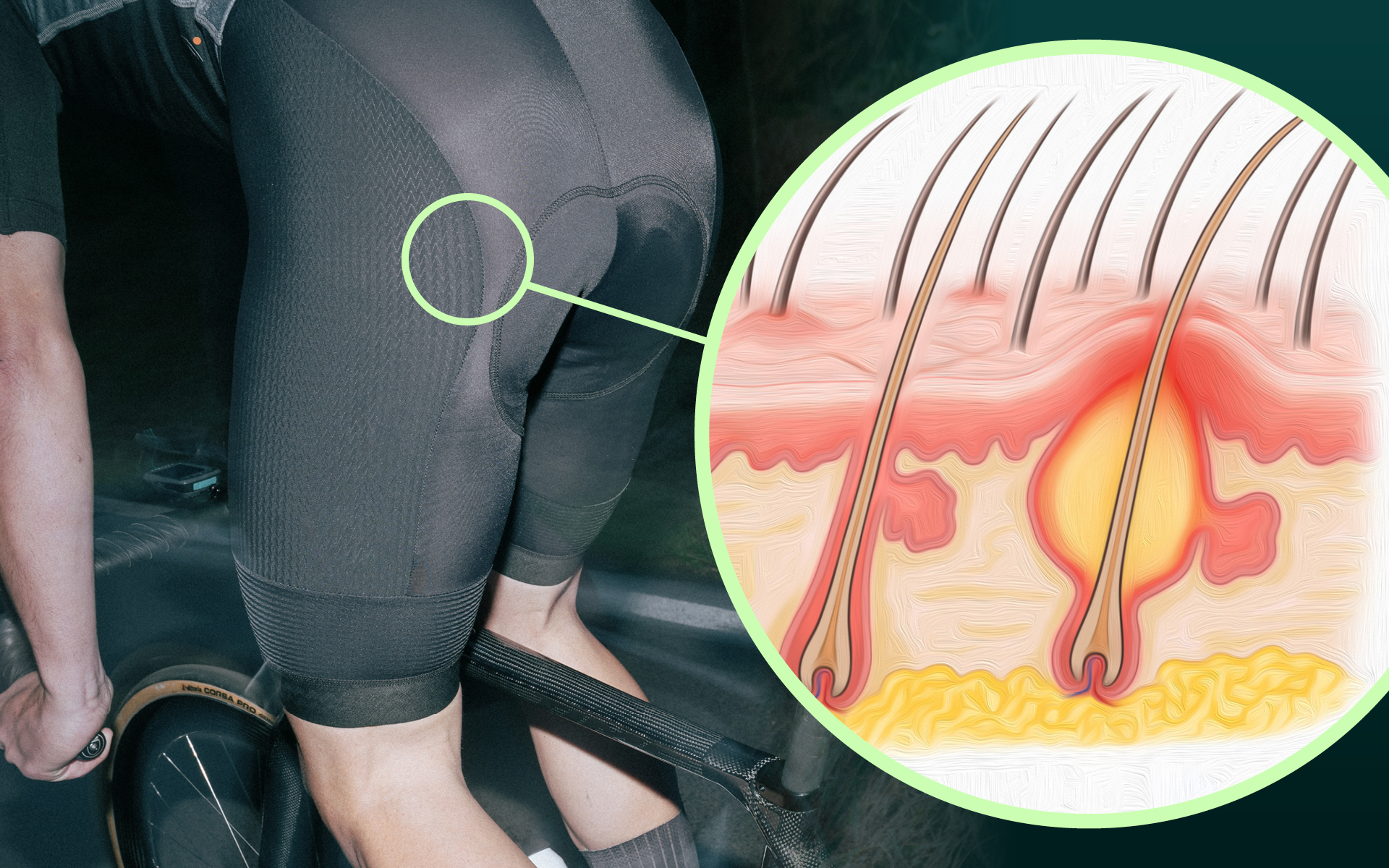Posedla Academy | Pressure ulcers and infections (e.g., furuncles) in cycling

Spending long hours in the saddle should not come with painful skin issues. Pressure ulcers and infections, such as furuncles, are common among cyclists due to friction, moisture, and prolonged pressure. If left untreated, they can lead to serious discomfort and even force you off the bike.
1 | What Are Pressure Ulcers and Furuncles?
Pressure ulcers (also called saddle sores) and furuncles (deep bacterial infections of hair follicles) develop in areas of high friction and pressure. They often occur where the skin is repeatedly irritated, leading to inflammation, infection, and painful swelling. Perineal nodular indurations are a more severe variation, where it is believed that repetitive micro-trauma to the perineum and the perineal fascia can lead to development of nodules in deeper layers of perineal tissue.
2 | Common Symptoms
-
Red, irritated skin or small painful bumps in high-contact areas
-
Swollen, tender nodules filled with pus (furuncles)
-
Open sores or blisters that don’t heal quickly
-
Burning sensation or chafing during or after rides
-
Lumps around 3cm in size, which can assume the appearance of an “accessory testicle” in men
-
In severe cases, fever and enlarged lymph nodes (signs of infection spreading)
3 | What Causes Them in Cyclists?
-
Prolonged saddle pressure – constant friction weakens the skin barrier
-
Sweat and bacteria buildup – moist environments encourage infections
-
Poorly fitting saddle – excessive pressure in one area increases skin irritation
-
Tight or non-breathable cycling shorts – trapping heat and bacteria
-
Lack of hygiene – not changing or washing gear properly post-ride. Also washing your cycling gear with cycling gear of other riders is a known risk factor
4 | Diagnosis: How to Identify the Issue?
-
Visual examination – identifying sores, irritation, or infected bumps
-
Symptom assessment – tracking pain, swelling, and changes in skin condition
-
Medical consultation – for recurring infections or slow-healing sores, pain that limits cycling
5 | How to Prevent and Treat Them?
-
Optimize saddle fit – reduce pressure hotspots and friction
-
Wear high-quality cycling shorts – breathable, seamless, and well-padded
-
Improve hygiene – wash after every ride and keep the area dry
-
Use chamois cream – reduces friction and irritation
-
Medical treatment – depends on severity and tissues affected, treatment can range from antibiotic or corticosteroid cream to surgical removal of the nodule

Expert Sources:
Peacock, J., Cobley, J., & Patel, B. (2022). Urological issues in cyclists. Journal of Clinical Urology, 15(2), 118–128. https://doi.org/10.1177/2051415820964982
Peters, K. T., Luyten, P., & Monstrey, S. (2014). Biker’s Nodule: A Case Report and Review of the Literature. Acta Chirurgica Belgica, 114(6), 414–416.
Egli, H., Totschnig, L., Samartzis, N., & Kalaitzopoulos, D. R. (2023). Biker’s nodule in women: A case report and review of the literature. Case Reports in Women’s Health, 39, e00539. https://doi.org/10.1016/j.crwh.2023.e00539
Your saddle should support, not harm you. If you're struggling with saddle sores or skin infections, it's time to adjust your setup and rethink your riding gear.